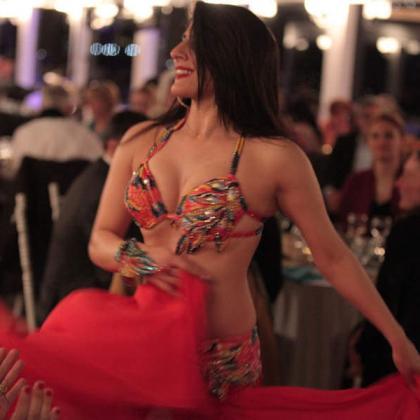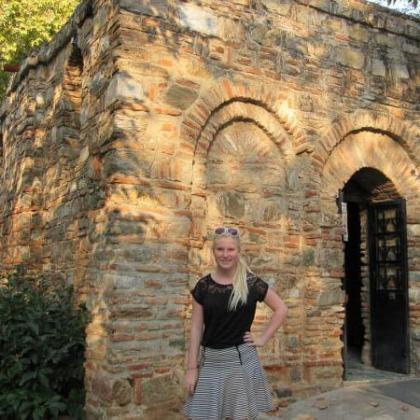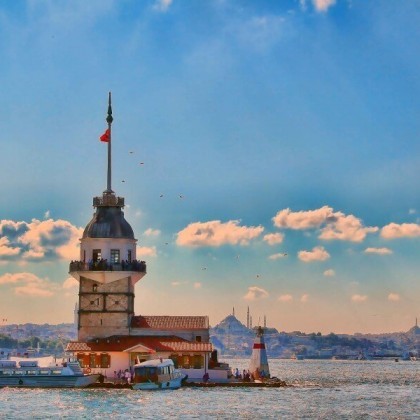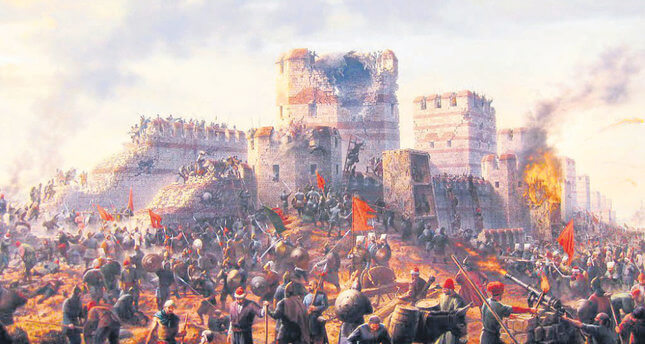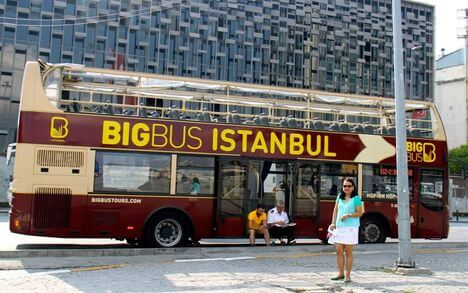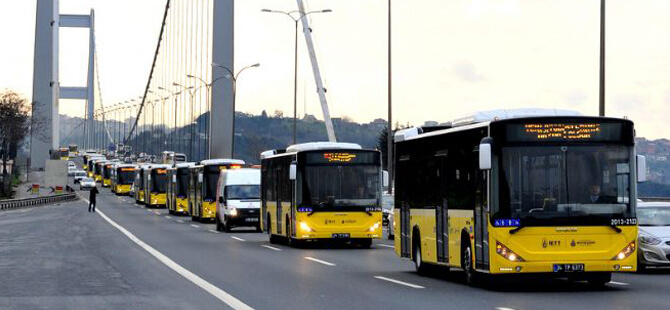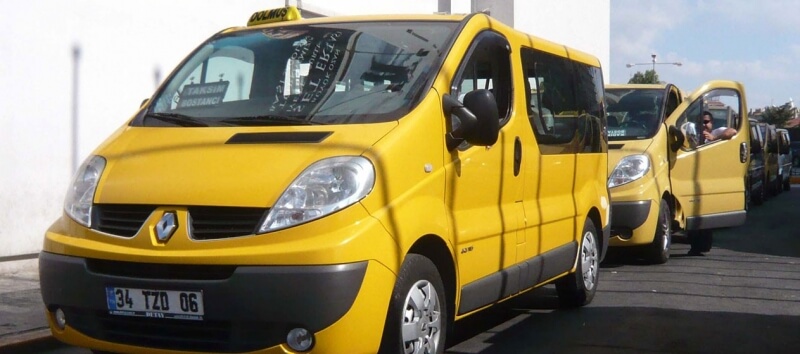Istanbul: The Best City on Earth
I ruddling two continents and almost three millennia of history, Istanbul exists on an incomprehensible scale. The city occupies a densely historic landscape of Ottoman Mosques, Byzantine mosaics, and Roman masonry. The Bosphorus Straits have proven to be the city’s lifeline and its curse: the strategic location between two seas and two continents gave birth to the city, but also attracted countless sieges from covetous neighbors. Having withstood innumerable demographic Lilts, devastating wars, natural disasters, and foreign occupations, Istanbul is naturally composed of a unique mix of civilizations, a melange evident not only in architecture and religious practice but also in everyday life. Conservative women wearing black veils mingle in the swelling crowds with younger women in Western dress, and major religious and historical sights double as the stunningly beautiful backdrops for love scenes in Turkish pop videos.
The original name of the channel comes from an Anglicization of the Ancient Greek Βόσπορος (Bosporos), which was folk-etymologized. In its current incarnation, Istanbul is the most crowded and cosmopolitan city in the Turkish Republic. This urban supernova explodes out into the surrounding countryside behind an ever-expanding front of new construction sites, but as no crane or cement truck could possibly hope to keep up with the pace of Istanbulian life, the city remains crowded. New immigrants from the Anatolian hinterland live in shanties on the fringes of the city. These dwellings, called gecekondus because they are hastily erected, as if in a single night (gece), were some of the first structures to be leveled in the devastating earthquake of August 1999.
The poverty of Istanbul’s gecekondus coexists with an ambitious commercialism as audacious and ostentatious as any to be found in New York or London. Yet every level of the city’s burgeoning economy remains distinctly Istanbulian: posh, modem nightclubs lend their space to raucous traditional weddings, and modem fast food competes for neck-and-neck with boatmen selling fried fish sandwiches.
Even as Istanbul’s centuries-long sprawl has engulfed entire towns, each neighborhood of the city retains a distinct character. Some sections of the city are easily accessible to the visitor. The challenge is to see beyond the Ottoman palaces, carpet salesmen, and backpacker bars, and venture out into neighborhood produce markets, back-alley tea shops, and Byzantine fortifications.
Istanbul New Year’s Eve Party Cruise on the Bosphorus
IstanbulWith this new year's eve party program in Istanbul, you will have an amazing new year party on the Bosphorus. Book it now and don't miss the special price!
View Tour3 Days Ephesus, Pergamon and Pamukkale Tour Package
Ephesus, Pamukkale, PergamonIf you want to make an amazing trip to the Ephesus, Pergamon, and Pamukkale, you should read our tour itinerary.
View TourIstanbul and Cappadocia Tour – 7 Days
Istanbul, Cappadocia, TurkeyIf you want to make a trip to Istanbul and Cappadocia both, we strongly suggest you join this amazing package tour. This tour covers all the accommodations, transportations, lunches...
View TourBest of Turkey Package Tour – 8 Days
Istanbul, Cappadocia, Ephesus, PamukkaleAre you looking for a good traveling package in Turkey? With our 8-days Turkey tour, you will make a trip to every important sight in Turkey. Enquire now for...
View TourİSTANBUL HIGHLIGHTS
- TOUR the Topkapi Palace , one-time residence of Süleyman the Magnificent and his harem, and pore over the visual archives of the Islamic World.
- VISIT the Blue Mosque , the six-minareted wonder whose creation once threatened the singularity of the mosque at Mecca.
- WANDER across creaky boards and among ancient columns through the eerie Underground Cistern (p. 127) to the partially submerged Gorgon heads.
- NAVIGATE the labyrinthine Grand Bazaar , and bargain for gold, silver, silk, and carpets as you drink bottomless cups of gay.
- BROWSE Ortakoy’s Sunday silver market and spend the afternoon playing backgammon with bohemians at a colorful waterfront cafe.
- SAMPLE lokum at the Egyptian Spice Bazaar , whose air is thick with the pungent aroma of tea and spices.
- HOP on the Tünel Metro, the oldest subway in the world, to watch a Whirling Dervish show at the Galat Mevlihane on İstiklâl Cad,
- BOARD a vintage ferry to the Prince’s Islands and bike among Greek monasteries before collapsing on the beach to work on that tan.
You can see all these places by joining our Istanbul tours.
HISTORY
The traces of the first known settlement in the Istanbul area date to the Paleolithic age. Mycenaeans established themselves on the site of modem Istanbul around the 13th century BC. Two hundred years later, settlers founded several fishing villages in the area, one of which occupied the site of the Topkapi Palace. It was not until Megarian colonists from Greece landed on the Asian shore of the Bosphorus around 700 BC, however, that the city’s history was first recorded.
Legend has it that in the 7th century BC, Byzas, a Greek speculator looking for prime real estate, consulted the infallible Oracle at, Delphi, which told him to settle “opposite the Land of the Blind.” As Byzas sailed the Bosphorus, he spotted the Megarian settlement on the Asian shore at Chalcedon (now’ Kadıköy, one of the centers of Asian Istanbul). Overcome by the glory of the Golden Horn’s harbor on the European shore, he decided that the folks at Chalcedon must have been blind to have ignored this site. Byzas and his crew settled here in 667 BC, and Byzas’s sister Ramona gave the city its first name in his honor: Byzantium.
Roman infighting at the beginning of the 4th century AD determined the city’s fate for the next millennium. The abdication of Diocletian in 305 prompted a power struggle between Constantine, Emperor of the West, and his rival Licinius in the East. The victorious Constantine declared Byzantium “New Rome,” renamed it Constantinople, and made it the capital of the Eastern Roman Empire, which later became the Byzantine Empire. Constantine’s enthusiasm for Christianity led to the building of the city’s first Christian churches. During the 5th century, Theodosius I supervised the construction of a massive set of fortified walls are around the city.
In 532, Emperor Justinian was nearly overthrown by the Nika Revolt, a dispute among factions of the Hippodrome. He was on the verge of abdicating when his wife, Theodora, reproached him for his cowardice. “Purple makes a good shroud,” she quipped. Purple being the symbol of imperial honor, Justinian got the message. After five days of bloodshed, he emerged triumphantly to face a mined city. He eventually restored Constantinople to twice its former glory, undertaking such building projects as the Aya Sofia. In the decades following Justinian’s reign, besieging Persian, Avar, and Slav armies kept Constantinople continually on her toes. The 7th and 8th centuries saw Arab raiders join the fray, but The odosius’s walls held fast. Finally, the Fourth Crusade broke through Constantinople’s seemingly impregnable defenses in 1204. The Latin Crusaders breached the sea walls and plundered the city, occupying it for 60 years. Following Latin rule, the Empire was further weakened by internal crises and skirmishes. The decline of the Byzantine Empire was paralleled by the rise of the Ottoman Turks, whose conquests in the 14th century marked the beginning of the Ottoman Empire.
By 1451, Mehmet II, known as “Fatih,” or “the Conqueror,” came to lead the Ottomans. The Byzantine emperor controlled little besides the coveted capital city; Anatolia and most of the Balkans were already in Ottoman hands. In 1452, a confident and careful Mehmet commissioned the building of two fortresses on the Bosphorus in anticipation of the conquest. Rumeli Hisarı and Anadolu Hisarı (the fortresses of Europe and Asia) stood on opposite banks of the Bosphorus and enabled the Ottomans to control the straits. The Byzantine emperor tried to block the Golden Horn but could not foil Mehmet, who had his boats transported by the city’s fortunes waited along with those of the Empire, and following World War I, Western powers occupied Istanbul. The Westerners were driven out of the city’ in the 1920s by Mustafa Kemal Atatürk, founder of the modem Turkish Republic.
Upstart Ankara became the capital of the Republic of Turkey in 1923, but Istanbul remains the cultural heart of Turkey. Between 1960 and today, the city’s population has increased tenfold, to over 13 million inhabitants.
TRANSPORTATION IN ISTANBUL
Flights: Istanbul’s airport, Atatürk Havaalanı, is 30km from the city. The domestic and international terminals are 800m apart and are connected by bus (every 20min. 6am- 11pm). For information on visas and entering Turkey, see Visas.
To Sultanahmet from the Airport: Take a Havaş shuttle bus from either terminal to Aksaray (every 30min. 6am-9pm, $7). At Aksaray, walk 1 block south to Millet Cad. and take an Eminönü bound tram to the Sultanahmet stop. The tram is a gray train with orange and blue stripes that runs along the electrical wires overhead. Alternatively, cab it to the Yeşilköy train station and take the commuter rail (tren) to Cankarturan, a short walk up the Küçük Ayasafya Cad. hill to hostel land. A taxi to Sultanahmet costs $9.
To Taksim from the Airport: Take a Havaş shuttle to end of the line (every 30min. 6am-9pm, $5).
To the Airport: Have a private seivice such as Karasu (®638 66 01) or Zorlu (® 638 04 35) pick you up from your hostel ($5.50; about every hour.). This service can usually only be arranged by a hostel or hotel, sometimes for much cheaper than the posted rate. Alternatively, take the Havaş airport shuttle from the McDonald’s in Taksim (45min., every 30min., $6.75).
Cheap fares: Many travel agents offer cheap airfares on charter flights to international destinations out of Atatürk Airport. Sample 1-way airfares include: Amsterdam $145, Berlin $118, London $210, Rome $178, Athens $116, Budapest $110, Tel Aviv $155.
Trains: In virtually every case, it’s quicker and cheaper to take the bus. All trains to Anatolia leave from Haydarpaşa Garı on the Asian side. To get there, take the ferry from Karaköy pier #7 (every 20min. roughly 6am-midnight, $.65). The pier is halfway between Galata Bridge and the Karaköy tourist office, where rail tickets for Anatolia can be purchased in advance at the TCDD (Turkish Republic State Railway) office upstairs. To reach both, make a right at the end of the bridge if walking from Eminönü, and walk along the waterfront. The office accepts couchette (kuşet) reservations for Ankara (2 days in advance, if possible). Haydarpaşa ticket office open daily 7:30am-ll:30pm. Tickets also available at the Sirkeci station. Europe-bound trains leave from Sirkeci Garı (®212 527 00 50 or 527 00 51), in Eminönü (downhill from Sultanahmet towards the Golden Horn). Connections to most European cities must be made in Athens or Bucharest. Some lines may be temporarily suspended due to Balkan political crises. Call ahead for info and student fares. Many of these destinations offer sleeper cars for about twice the cost, with the price per person decreasing by about $2 for each person with whom you are willing to share a bunk.
Buses (domestic and international): Inter-city buses leave from the Esenler Otobüs Terminal in Esenler, several kilometers from central Istanbul. The otogar is laid out like a giant set of parentheses around the metro stop in the center. Bus companies sell tickets from their offices on the ground floor of the 2 parenthetical buildings, facing inward. Buses depart from the outer side of the building. Each company has a number corresponding to their place along the ticket arcade, from 1 to 167.
To the Bus Terminal from Sultanahmet: Take the tram to Yusufpaşa (1 stop beyond Aksaray; $0.50), cross the overpass from the platform, walk İmin, to the Aksaray metro station on broad Adnan Menderes Bul., and take the metro to the otogar (15mln., $.40). Most companies have courtesy buses, called servis, that run to the otogar from Eminönü, Taksim, and other points in the city (free with bus ticket purchase). Certain travel agencies will arrange transportation for free to the bus station if you buy the tickets from them for one of their client bus companies.
Bus companies: Hundreds of buses leave daily for virtually every point in Turkey and for some neigh-boring countries. Service tends to vary widely in quality and safety, so be careful choosing a com-pany. Travel agencies are perhaps the most convenient way to arrange transportation (calling the companies directly, particularly if you don’t speak Turkish, can be difficult and confusing). Other-wise, get to the station with 30min.-lhr. to spare, shop around for the best price to your city, then buy your ticket. For trips within Turkey, Aydin (-ff 658 09 09), Kamil Koç (®658 20 03; No. 147), Metro (No. 51), Nevtur (®658 08 65), Ulusoy (®658 30 00; fax 658 30 10; No. 127 in the terminal), Truva and Varan (®658 02 74; No. 15-16) are professional and enjoy good reputations. Unfortunately, they don’t run to many towns in Eastern Turkey. To get there, you can take a slightly less reputable bus direct from Istanbul (see below) or simply go as far as you can with one of the major companies and then switch over to more reliable regional service. Reservations are recommended, and tickets can be bought in advance at the bus company offices in central İstanbul. Fares increase by about 10-15% during the summer and over religious holidays.
Ferries: Turkish Maritime Lines , near pier #7 at Karaköy, to the left of the Haydarpaşa ferry terminal. Look for a building with a blue awning marked Denizcilik İşletmeleri. The Samsun-Trabzon Ferry traverses the Black Sea, leaving from Saraybumu in İstanbul (M 2pm). (See The Black Sea Ferty for details.) Ferries also leave for Bandırma, with train connection to İzmir (combination ticket $10-25). Ferries and seabuses cross the Sea of Marmara to Yalova, where you can connect to Bursa and other points inland. To Yalova from Bostancı (45min.; 6;25am, 5;55pm; $6.50); Kabataş (lhr., 6 per day 7:20am-8pm, $7.10); Kartal (35min„ 8 per day 6:50am-8:15pm, $4.75). The slower ferry, yolcu vapürü (-s-814 10 20) runs from Kabataş (2’/2hr.; 9:30am, 2, 6:30pm; $3) and Kartal (4 per day 9am-9:15pm). For local ferry info, see Getting Around: Ferries.
Waterways divide Istanbul into three sections. The Bosphorus Strait (Boğaz) separates Asia from Europe. Turks call the western, European side of İstanbul Avrupa and the eastern, Asian side Asya. The Golden Horn, a river originating outside the city, splits Avrupa into northern and southern parts. Directions in Istanbul are usually further specified by city precinct or district (Kadıköy, Taksim, or Fatih).
Most of the famous mosques, historical sites, and tourism facilities are south of the Golden Horn and toward the eastern end of the peninsula, which is framed by the Horn and the Sea of Marmara. The other half of “Europe” is focused on Taksim Square, the commercial and social center of the northern European bank. Two main arteries radiate from the square: İstiklâl Cad., the main downtown shopping street, and Cumhuriyet Cad., which is lined with airline offices and hotels. The Asian side of İstanbul is primarily residential, but offers plenty of rewarding wandering and a more relaxed pace.
Each district is defined much more by its center than by its often unclear borders. Many of these districts were once outlying towns, long since swallowed up by Istanbul’s insatiable expansion. European Sultanahmet and Taksim, and Asian Kadıköy, will be the most relevant for most visitors to the city, but memorizing the location of even a few more areas on the map will prove immensely helpful. With help from a map and a keen eye for the many landmarks, you can navigate yourself through the maze of alleys that make up the city.
LOCAL TRANSPORTATION
Getting around İstanbul proves fairly easy during the day and evening. Dirt-cheap ferries, buses, shared-taxi dolmuş and trams make good substitutes for the comparatively expensive private taxis that swell the streets. Even so, the city is gargantuan, and navigating it can be frustrating even for native of Istanbul. The metropolis must, be considered a series of neighborhoods rather than a system of coherent streets. Very often streets will change names unannounced as they move
I one neighborhood to the next. As the city has grown, the borders between neighborhoods have become nearly imperceptible, and streets appear to change mi a whim. Keep the tram and metro in mind as you organize your travel plans — they can usually get you within walking distance of where you want to go, or at least reduce the eventual cab fare. If you know the names of your home and destination neighborhoods, finding a bus or dolmuş should be fairly simple. Heavy traffic can significantly prolong travel time between far-flung neighborhoods, so it’s best to focus your day’s itinerary on one particular neighborhood or area of the city and explore from morning to evening.
AKBIL AND TICKETS
Istanbul’s transportation systems have become somewhat more integrated with I lie introduction of AKBIL, an electronic ticketing system that works on municipal ferries, buses, trams, seabuses, and the subway (but not dolmuş). Anyone staying longer than three or four days should definitely consider springing for an AKBİL tub. After an initial deposit of $5, you can add money to your tab (a little plastic Leyring with a magnetic button on the end) in 1,000,000TL increments arid save I -50% on fares when you hold the tab against a reader on the bus or at the station.
I leposit credit to your AKBİL from any of the while IETT public bus booths which lias the sign “AKBİL satılır.” Such kiosks are located at most sizeable bus and I nun stops, such as Eminönü, Beyazıt,, Taksim, Sariyer, Kadıköy, etc. The Kabataş und Eminönü seabus terminals (among other spots) have automated AKBİL 24 machines, which are open 24 hours. These are good to use for seabus trips, since using AKBIL on the boat save you 15-20% on pricey seabus tickets.
To use the machines, press your tab into the reader and remove it, insert a 1,000,000TL note, and press once more. If you have enough on your tab, the machine beeps once and you may board; otherwise it sounds a lower note and a red light blinks on. Regular tickets are not interchangeable, meaning that you can’t use a bus ticket (bought at a kiosk) for the tram or on a bus with a ticket seller on board. Tickets for trams and buses without ticket sellers are available from little white booths, while ferries and seabuses take jeton (tokens) available at ferry stops. At the major stations (Eminönü, Beyazıt, Karaköy) it is far less confusing to go to a manned AKBÎL booth, indistinguishable from the ticket booths but for the large AKBİL sign. Always be sure to carry plenty of small lira notes so that if you are on a bus with a ticket seller, you won’t have to clog up traffic.
BUSES
Istanbul’s bus system is a dream, not because of its organization or punctuality, Imt because there are simply so many buses, with one going wherever you need to go about every 10 minutes. Bus service runs from approximately 5am to midnight, dropping off after about 10:30pm. The real difficulty for newcomers is figuring out where to catch a given bus. The bus system centers on several major stops, from which all buses serving a certain part of the city leave. Hubs include Eminönü (in lire parking lot on the seaward side of the Egyptian Spice Bazaar), Aksaray (Yusufpaşa tram stop), Beyazıt (near the tram stop), Taksim, Beşiktaş, and Üsküdar. It is generally best to go to one of these hubs and then catch the next bus you need from there, although there are a few much-traveled routes along which you can be sure to find the bus you need. Signs on the front of buses indicate the endpoints of the route, and signs on the right-hand side list the major places that the bus passes.
Smaller stops aren’t always posted. If you do not see your destination listed in the front window, step in and ask the driver: “Bu o to bus [destination] gider mi ?” (“Does this bus go to [destination]?”) That should do the trick, or you can simply get on, look a bit lost and say the name of your destination. This will usually get the job done as well.
From Sultanahmet, bus #210 leaves from the Aya Sofia Meydanı, crosses the Galata Bridge, and heads up the European Bosphorus shore to Orlaköy and Bebek (every 20min.). From Aksaray and Beyazıt, multiple buses serve districts to the northwest along the Golden Horn (Yedikule Fortress, Zeyrek, Fatih, Fener, Balat, Edimekapı, Eyüp). In the big bus lot at the foot of the Galata Bridge in Eminönü, six platforms (peron) serve different areas to the north and along the Bosphorus: Yeşilköy (#81) and Ataköy (#71) from peron #1; Karaköy, Beşiktaş, Bebek (all #22c) from peron #3; and Taksim (#4Gh) from peron #5. From Taksim Square, most buses head either north into the suburbs or southwest across the Atatürk Bridge to Aksaray and Beyazıt. Any given route has buses running in the reverse direction as well, and many routes are largely repeated by other buses. When the bus nears your stop, push the button on top of the door to alert the driver.
Even if you are using AKBİL, be sure to have a few spare bus tickets in the event of unexpected bus changes. By the same token, remember to have extra money in case you take a private bus—impossible to differentiate from a public one—which will require that you buy a ticket on board. A final note on buses: when riding the bus, courteous passengers should give their places to elderly riders and women with children if there are no available seats.
DOLMUŞ
Dolmuş, a venerable Turkish tradition, are minibuses that run along a fixed local route. Like buses, they’re cheap, and the endpoints of their routes are posted in the front window. Because stops are not announced, it’s easiest if you know what your stop looks like or if you want to get off at the end of the line. Dolmuş are generally unnecessary within most of Istanbul since buses are plentiful (with the exception of Kadıköy), but they can be helpful and are much more comfortable than city buses. Dolmuş run only during daylight hours and the early evening, and they are most active at the end of the workday, when people congregate on curbs all over the city, waiting for their ride home. They can be found near most of the major bus hubs, including Aksaray and Eminönü. Dolmuş also congregate around the Hippodrome in the early evening and in front of Aya Sofia throughout the day. The largest and most useful collection of dolmuş is in the side streets north of Taksim Square, where you can catch one to Beşiktaş, Sariyer, Karaköy, Kadıköy, or Aksaray. In neighborhoods far from the bustle of Taksim and Sultanahmet they serve as local group taxis, and it is best to hail them down as they crawl along streets picking up passengers on their way back into the center of Istanbul. For more information on dolmuş travel, see Dolmuş Do’s and Don’ts.
TRAMS, COMMUTER RAIL, AND METRO
The tramvay (tram) runs from Eminönü to Zeytinbumu ($.50 per ride). Since it’s easy enough to follow the tracks, the tram is very useful for finding your way back to Sultanahmet even if you don’t actually take it. A second tram begins behind the large mosque at the Yusufpaşa tram stop in the middle of Adnan Menderes Bul., and it heads to the outer suburbs of İstanbul (Zeytinburnu, Bakırköy, etc.) via the new otogar (intercity bus station). Built with consideration for modern istanbul’s sprawling expanse, the tram weaves through many of the city’s major neighborhoods. Though there are only a couple of lines, the tram can drop you off within close proximity to many popular destinations.
The city continues to run a beautifully ramshackle commuter rail (known locally as tren) between Sirkeci Gar and Istanbul’s far western suburbs. The upshot of the cars age is that many of the windows have become stuck halfway down or are missing altogether, making for blessed ventilation and exhilarating views of the m and ancient city walls along the southern coast of the European side. Watch vi »ur step getting on, however, as there are often gaps between the door and the rilges of the platform. Despite its defects, the tren is a good option, and many locals use it for their daily commute. For most visitors, the tren is nice for two 11 tings: a more pleasant ride from Sultanahmet to Sirkeci and a cheaper route to I lie airport. To find the Cankurtaran station near Sultanahmet, head downhill and IHI, from the Blue Mosque. The tracks run on an elevated path, parallel to the i uastal road. It’s a one-stop ride to Sirkeci along the seaside tracks. In the other direction, a 30min. ride goes to Yeşilyurt (near Yeşilköy), from where a cab to the airport is a mere $4. The tren runs the same hours as the tram and is just as cheap. I ‘so AKBÎL or a, jeton. The combination of the two-stop metro and a trolley along İstiklâl Cad. makes for an easy way to get up to Taksim Square if you want to walk across the bridge from Eminönü and then catch the metro on the other side.
TAXI
Most cabs can be spotted from miles away, since the little yellow street bees have chrome wheels, lots of glittering evil eye protectors, and multiple hood ornaments with names like “saloon” or “sport.” Given the chance, taxi drivers are even more reckless and speed-crazed than other Istanbul drivers. This is particularly true it after midnight, when all public transportation is closed, roads are more empty, and(l drivers are eager to give their cars a workout after a day of traffic-jam crawl. Many Turkish taxi drivers are devoid of fear and eager to show off their ability to make their vehicles do maneuvers previously thought possible only on skate-boards. If at any point you feel uncomfortable in a taxi, you can and should ask the driver to slow down (Yavaş lütfen) or to stop (Dur!). That said, high-speed cab rides late at night are good fun, and probably the only way you’re going to see the blur of neon club signs and headlights of an İstanbul evening at 150mph.
ON THE LOOKOUT: TAXI SCAMS.
Though Istanbul’s cabbies should by no means be considered generally corrupt, scams are widespread. Be especially alert if you don’t speak Turkish and are catching a cab in Sultanahmet or Taksim. A common trick is to use the night rate (50% more after midnight) during the day. One light on the meter means day rate; two lights mean night rate. Other common scams are to give | foreigners incorrect change, taking advantage of their unfamiliarity with the currency, or to intentionally not reset the cab’s meter when you enter. Feel free to fix a price if you don’t trust the driver or your ability to recognize an excessively long route.
A ride between Sultanahmet and Taksim should be no more than $5 for a group of 3, and few rides in the central İstanbul area should cost more. You can shave $3-4 off a trip from Sultanahmet to Taksim by walking 500m up the tram tracks to Beyazıt and catching a cab there, where it’s a straight shot to Taksim.
Or if the tram is still running, ride it to the end of the line, get off at Eminönü, and hail one of the many cabs that sits by the waterside around the Galata Bridge. Especially in Sultanahmet, ask your hostel which cab stations are honest, as the cabs who wait in front of Aya Sofia are notoriously unscrupulous.
FERRIES
Closer to a respite from the metro grind than a part of it, Istanbul’s ferry system transforms mundane public transport into a scenic mini cruise. They can also shave nearly an hour off transit between Istanbul’s Europion and Asian sections. Ferries run primarily between Europe and Asia, though (here is same-side service up the Bosphorus and to more remote points such as Yalova and the Prince’s Islands (Adalar). Among the many boats that cluster around this port, the ferries are large white and green ships with yellow smokestacks that often spew a thin black smoke. Timetables are posted at each terminal. Before leaving for a far-off destination, be sure to check that there is a return ferry later in I he day.
The following boats depart from the piers clustered around Galata Bridge in Sirkeci (each dock is labeled with the destination): Üsküdar (pier 1, every 15- 20min. 6:30am-10pm, $.75); Kadıköy (pier 2, every 15-20min. 7:30am-8:30pm, $.75); Prince’s Islands (Adalar) and Yalova (from a dock down past pier 1, on the other side of the car ferry; Yalova $3, Adalar $1.50); Harem (from a pier labeled “Posta” in large red print among the above piers, every 20min, $.75). To get to Balat and the Haydarpaşa train station, take a ferry across the Golden Horn to Karaköy, then catch a boat down to these points. Femes to Karaköy leave often from the piers on the far side of the Galata Bridge and cost less than $1. From the car ferry near the Adalar dock, other ferries connect the various İstanbul suburbs every 30min. ($1-4). For details, buy a timetable (feribot tarifesi; $.60) at any pier.
Points on the Bosphorus are served by less frequent and more expensive day cruises. Some of the ferries to the north shore of the Golden Horn are commuter ferries. Since they leave in the morning and return in the evening, taking an evening ferry could leave you stranded. There is a day cruise that floats up the Golden Horn, docking at places like Fener and Balat and a couple of points further north. But if you’re planning for a day in these neighborhoods rather than a day on the boat, it is best to reach these points by land.
Fast Seabus catamarans, each carrying up to 250 passengers, also run along the ferry routes. The seabus generally disembarks in the same area as the ferry, as the two dock in the same place at many destinations. Seabuses (recognizable by their leaping dolphin emblem) are twice as fast as ferries and cost about three to four times as much (average $4-5). Free timetables are available at the booths.
TRANSPORTATION SUGGESTIONS
FROM THE AIRPORT TO:
- SULTANAHMET: From the international terminal, catch a Havaş bus to Aksaray (every 30min. 6am-9pm, $7). From there, catch an Eminönü-bound tram to Sultanahmet (walk uphill along the overpass to the Lâleli tram stop). Alternatively, split a cab ($8), or pick up Istanbul’s tren in Yeşilyürt to Cankurtaran, which leaves you only a short walk (straight uphill) from Sul-tanahmet. It’s cheaper and more fun than the Havaş, though less direct.
- TAKSİM SQUARE: Stay on the Havaş bus. Airport-bound Havaş buses leave from the Havaş office on Cumhuriyet Cad., right off the square.
- CAMPGROUNDS (FLÖRYÂ/ÂTAKÖY): They’re not far from the airport and you need only take a cab once ($3), as the campgrounds are right next to a stop on the tren running fre-quently to the Sirkeci train station. From here you can either walk or catch buses to most every-where else.
- ASIAN İSTANBUL: Go either to Taksim, from which most of the Asia-bound buses leave, or to Eminönü (see Sultanahmet directions, above), from which both the Üsküdar and Harem Kadıköy ferries leave.
FROM THE SULTANAHMET TO:
- TAKSİM SQUARE: Bus #61B runs infrequently between Beyazıt and Taksim. For faster transport, take the tram (Zeytinburnu-bound) to Yusufpaşa. From the platform, go up onto the overpass, head left, and catch the bus from the stop at the bottom. Taksim-bound buses pass at least every 5min. Alternatively, take a 5min. walk across the Galata Bridge, and catch the metro and then the trolley up to the square a pleasant way with little hassle or crowds.
- EMINONU (Spice Bazaar, Ferries, Yeni Cami): Tram it to the end of the line, or walk lOmin. along the line. The tren runs from Cankurtaran station down the hill from the Blue Mosque to Sirkeci Gar, a stone’s throw from Eminönü.
- EUROPEAN BOSPHORUS: (Kabataş, Beşiktaş, Arnavutköy, Ortaköy, Bebek; some buses follow inland routes to Rumeli Hisarüstü and Sariyer): Either take bus #210 from Aya Sofia Square (Mey¬danı) or buses #20-25 from Eminönü platform 3. Bus #40KT runs express from Taksim to the ferry port at Kabataş.
- YEDİKULE: Take the commuter train from Cankurtaran station in Sultanahmet ($.40). Buses also leave from Eminönü, but from the stop on the waterfront side.
- FENER, BALAT, EDİRNEKAPI, EYÜP: Buses run between Beyazıt and Edirnekapi, but it’s quickest to tram to Yusufpaşa and then head to the Aksaray bus stop near the Aksaray Metro station on Adnan Menderes Bul. Bus #39E runs to Eyüp. The bus passes through the districts in the order listed above. Eyüp and Eyüp Sultan are essentially the same place.
- FATIH: Take a bus marked Fatih or Draman from Beyazit (one stop on the tram from Sultanah-met) and get off at Fatih.
- YALOVA: Use the ferry or the less frequent seabus service from Kabataş. Otherwise, take the seabus from Yeni Kapı on the tren line (every hr.).
- ASIANİJOSPHORUS (Beylerbeyi, Anadolu Kavağı, Kanlica, Paşabahçe): Take a ferry to Üsküdar ($.60). From the main bus stop across from the iskele (ferry stop), catch a #15 bus, which will head up the Bosphorus.
- PRINCE’S ISLANDS (ADALAR): Take the “Adalar İskelesi” ferry from Eminönü, the one closest to Sirkeci train station, next to the car ferry. High-speed catamarans to Adalar depart the Kabataş dock in late afternoon and early evening ($4).
- SELİMİYE BARRACKS (Florence Nightingale’s chambers): Take a ferry to Üsküdar ($.60). Catch one of the many buses ($.50) or a cab ($2) down to the Harem iskele/otogar. For an easier trip, take the ferry to Harem. The barracks can be seen uphill from the water
- KUMKAPI (fish restaurants): Avoid the very short, hot walk along Sahil Yolu during the day by catching the tren from Sirkeci or Cankurtaran stations.
PRACTICAL INFORMATION
İSTANBUL STREET SMARTS
Visitors to İstanbul should exercise the same common sense they would use in any large city. “Touts,” the men who call out to foreigners (particularly in Sultanahmet), are annoying but ultimately harmless. Feel free to ignore these hawkers; there’s no need to even make eye contact.


